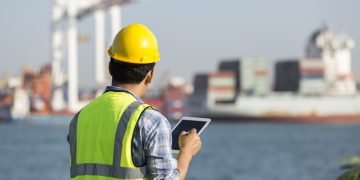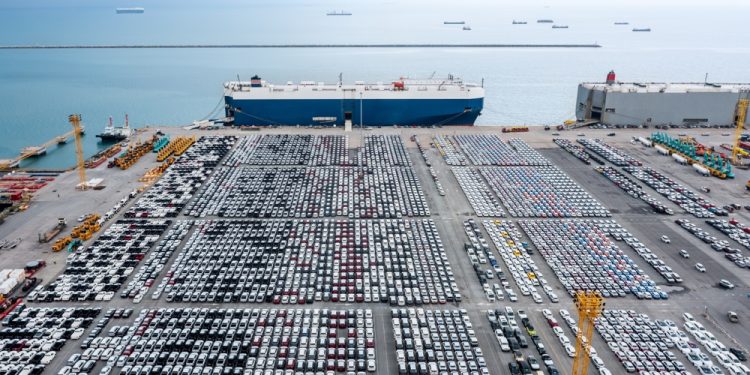IUMI has recently issued an informative paper on electric vehicles suggesting best practices and recommendations for their safe carriage at sea. Electric vehicles can be transported either by pure car and truck carriers (PCTCs) or roro/ropax vessels which have significant differences.
In that regard, IUMI examines the fundamental design distinctions between PCTCs and RoRo/RoPax, stressing that these ship types also differ in terms of safety precautions, risk control choices, and incident responses.
Roll-on/roll-off (roro) and ropax vessels
The roll-on/roll-off (roro) ship was defined in the November 1995 amendments to Chapter II-1 of the International Convention for the Safety of Life at Sea (SOLAS), 1974 as “a passenger ship with ro-ro cargo spaces or special category spaces”. They are designed to carry wheeled cargo such as cars, motorcycles, trucks or buses which are driven on and off the ship on their own wheels.
Roro and ropax vessels have either built-in or shore-based ramps or ferry slips that allow the vehicles to roll on and off the vessel when in port. Roro spaces are categorized as either open, closed or weather decks. An open roro space is generally a space with more than 10% openings in the hull sides. A roro space is defined as a closed space if it is not an open or a weather deck.
The large openings in semi-open and open decks on roro passenger vessels make firefighting challenging due to the air flow. A fire on an open deck could grow significantly while fires in spaces with smaller openings are restricted by the available oxygen.
A challenge specific to ropax vessels is the cargo they carry. EVs such as cars, buses and excavators are often used and may have hidden damages. It is a difficult to visually check at the terminals which units are safe to carry and which ones may not be safe.
A particularity of ropax vessels is the growing interest by passengers to have the possibility to charge EVs on board. In this context it is important to note that charging stations and cables have to be approved by classification societies and that the charging cables are to be connected by the vessel’s crew.
EMSA has published guidelines on the carriage of alternative fuel vehicles in roro spaces. These include a section on how charging on board may take place safely.
Pure car and truck carriers (PCTCs)
Pure car and truck carriers (PCTCs) are purpose-built vessels for the transportation of different types of rolling cargo, e.g. new and used passenger cars and trucks, heavy construction equipment, and other heavy loads. PCTCs are usually configured with 10-13 decks for the loading of different vehicle types.
The height between the decks can be adjusted depending on the types of vehicles being transported. The height of the vehicle decks is extremely low to reduce the loss of cargo space. Adjustable decks further optimize the cargo space.
The vehicles are loaded with very little space between them. This impedes quick access to specific cars. A particular challenge associated with PCTCs are alongside fires because the CO2 extinguishing systems cannot be used. When both the internal doors and the stern/side ramps are open during the loading process the CO2 cannot be contained within the vessel.
Foam based extinguishing systems are less effective due to the uneven airflow which distracts even spread of the foam. Due to their construction the ramps cannot be closed quickly. External firefighting teams are not familiar with the design of vessels and are not trained to fight fires in such environments.








































































































































